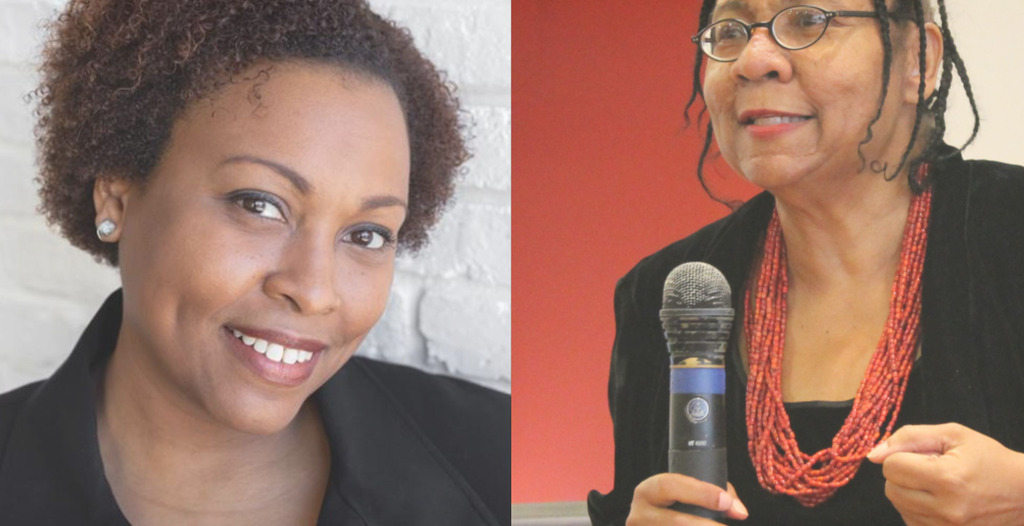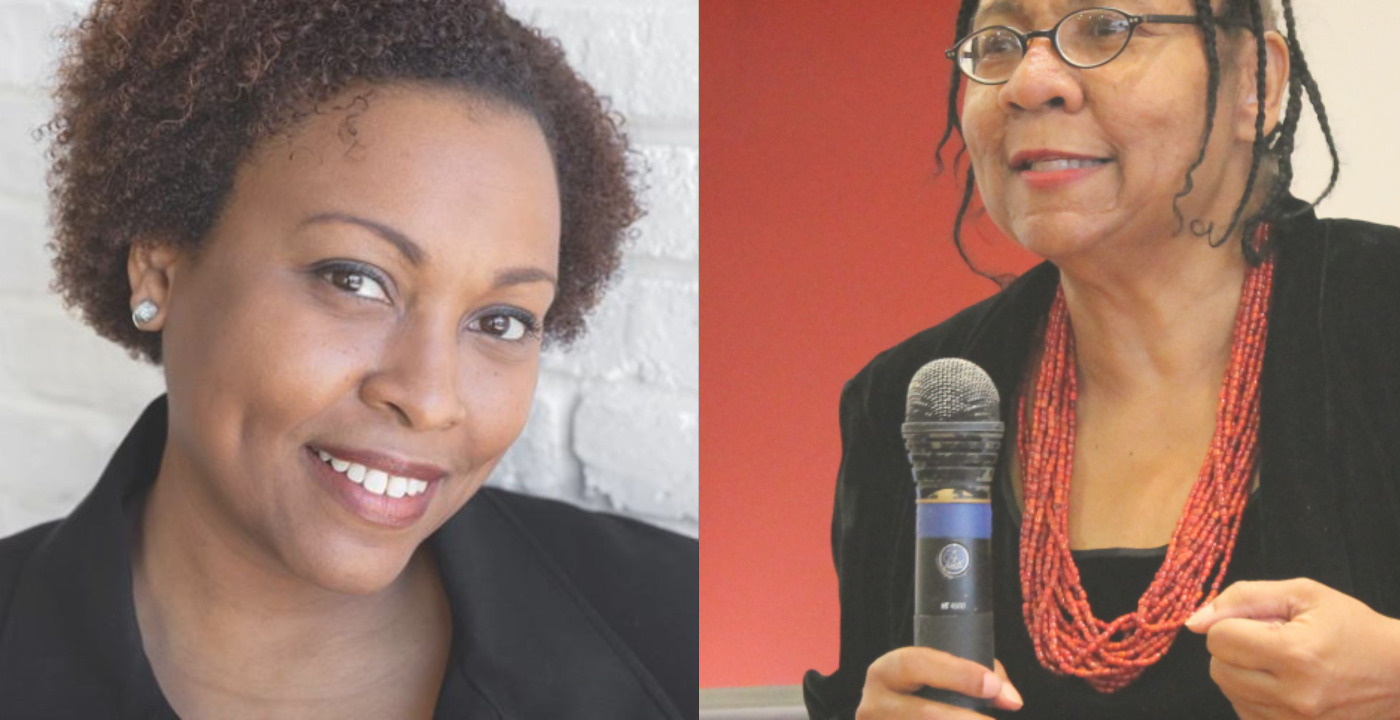Two years have passed since the difficult December of 2021. In a span of ten days, two Black feminist giants in my world passed away: bell hooks on December 15 and Ella Turenne on December 25. Both of these women played significant roles during my time as an administrator and part-time faculty member at Eugene Lang College of Liberal Arts at The New School. Most importantly, they taught me, in the words of feminist scholar Sara Ahmed, about living a feminist life.
A Black Feminist Dialogue Among Kindreds
As Black women living and producing knowledge in this 21st-century world, bell hooks and Ella Turenne contributed to Black women’s intellectual thought and action. Both women were keenly aware of their social identities and drew on the strength of these identities to resist what bell hooks called the “imperialist white supremacist capitalist patriarchy.”
Looking first at bell hooks’s vast body of work in non-fiction, poetry, memoir, and children’s books, her goals were clear. They were, as she wrote in Yearning, “to struggle against oppression, domination, and especially racism.” While bell wrote capaciously about these themes in Sisters of the Yam, Talking Back, and Killing Rage, she also gave us hope about self-recovery, healing, spirituality, and love in books like All About Love, Communion, and Salvation. bell was a cultural critic who did not shy away from critiquing anyone, including Black writers, artists, and cultural producers. This is most evident in her books Outlaw Culture and Reel to Real. Later, she took a curious turn, writing children’s books in an effort, in my mind, to shift dominant narratives about Black children and families. Through her children’s books Happy to Be Nappy and Be Boy Buzz, bell joyfully celebrated Black hair and Black boyhood with color-filled pages.
Ella Turenne was a powerhouse in her own right who was inspired by bell hooks. In her final days, she dedicated two social media posts to bell. On Instagram, Ella wrote:
the loss of bell hooks is a deep loss. her words have been with me every step of this doctoral journey. she's taught me to be fearless with my thoughts and words. thank you bell hooks for helping black women take up space unapologetically. –Ella Turenne
It is evident throughout Ella’s writing and art that bell hooks’s ideas deeply informed hers. Ella described herself as a “one-woman army of culture” and “champion for freedom, justice, and expression.” I witnessed Ella putting into practice bell’s ideas of struggling and resisting the “imperialist white supremacist capitalist patriarchy” in the form of her one-woman show, Love, Locs and Liberation, which she wrote and performed across the country. Ella also produced the short film, woodshed, a podcast, Fanm on Films (famn is the Haitian Kreyòl word for woman), and was a voice actor and audio storyteller in multiple languages (English, Haitian Kreyòl, and Spanish). Like bell, Ella was a writer and poet. She performed spoken word poetry, contributed to anthologies, and edited a seminal volume for the bicentennial of Haiti’s independence. With all of her artistic and knowledge productions, Ella fundamentally was a connector, and it is no surprise that she founded BlacWomyn Beautiful, a platform that celebrates the beauty and power of Black women, as well as SistaPAC Productions, whose mission is to develop original creative works from women of color.
A Life of Black Feminist Praxis
Both bell and Ella lived a life of praxis–bringing the ideas of Black feminism into focus and action through their combined literary and artistic contributions, as evidenced in their schemas (bell hooks/Ella Turenne). Analyzing their feminist contributions, it is clear they brought to life feminist ideas like “spheres of freedom” and “pivoting the center.”
In the seminal text, Black Feminist Thought, Collins describes “spheres of freedom” as emancipatory sites or locations created by Black women and femmes to resist and reclaim oppressive social structures and systems like racism, sexism, classism, etc. bell hooks talked about creating a healing space in Sisters of the Yam for her and Black women graduate students and faculty at Yale in the mid-1980s. As described by bell, a place “where Black women could name their pain and find ways of healing” is an example of a sphere of freedom.
Ella was no different in her efforts to create spheres of freedom for Black women and femmes, especially those from the Haitian diaspora. The podcast Fanm on Films is a digital space where Ella created opportunities for her and her co-host, Martine Jean, to uplift and amplify the work of Haitian creatives like filmmaker Guetty Felin, whose film Ayiti Mon Amour was Haiti’s first-ever Oscar-nominated film, among others. She dedicated her podcast platform to resisting and reshaping the narratives about Haitian people in film specifically and, by doing so, created a sphere of freedom. Ella described this effort to resist prevailing narratives about Haitian people in this way:
Because of who we are as a people, a lot of these films intersect with social issues. And so wherever we can, we want to also bring a light to what’s going on and have conversations about some of these issues that are intersecting with our communities. This is one of the powers of art and film: it’s that it allows you to tackle really difficult subjects sometimes, child trafficking being one of them. If we can help, also eliminate some issues that are going on in the community that have a broader scope, then we want to be able to do that, too.
Collins introduces the feminist idea of “pivoting the center'' as another way Black feminist ideas can move from dialogue into action. Drawing on feminist activist and professor Bettina Aptheker, Collins suggests that the goal is not decentering but shifting attention to better observe a given phenomenon. To decenter suggests a binary position–centered or decentered. Aptheker’s notion of pivoting allows for a plurality to exist as the center. In the spirit of the feminist ideas from Aptheker and Collins, I found evidence of how bell and Ella pivoted the center in their work.
bell hooks wrote toward and for Black people. While many others found their way to her work, bell had a deep commitment to the well-being and healing of Black people from interpersonal and familial domination and violence to structural and systemic violence, as evidenced in books like Salvation, Communion, and Sisters of the Yam. The center of her work was always the liberation of Black people’s minds and bodies, though many others benefited from it as well. In that same spirit, Ella pivoted the center toward Black people, Black women, and especially Black people of Haitian descent. In 2004, Ella co-edited a seminal volume for the bicentennial of Haiti’s independence that brought together Haitian and Haitian diaspora writers and creatives to pivot the center of the telling and historizing of Haiti’s independence from the vantage point of Haitians themselves.
Unconclusions and Final Ruminations
bell and Ella created spheres of freedom from which we can learn. They pivoted the center in their scholarly and creative work as a means of resistance and resilience. The dialogue between bell and Ella’s knowledge and cultural productions is clear. They were both child performers, poets, intellectuals, and creatives. They powerfully harnessed their literary and creative genius to assert the lived experience of Black women. By doing so, they made Black feminist theory available to everyday people on multiple platforms. As multi-hyphenate professionals, they were serious about growing a vision of what it means for Black women to have ownership over their ideas and crafts, but bell and Ella were also critics of systems of oppression, working to offer alternative visions and futures for Black womanhood, futures full of love, abundance, and generosity.
I like to think of bell and Ella as kindred spirits: their work speaking to each other. They are also kindred to me–mentors, teachers, and fellow Black feminist travelers. I drew on bell’s work in my teaching and administration at The New School. Ella was my predecessor in the office I led at The New School. Both women touched me personally and profoundly, and I’m grappling with the giant hole they have left behind. These were some of Ella’s final words before her untimely passing:
i'm still ruminating over the loss of bell hooks. i let myself get tangled in her words, especially during my exams. i felt like we were in conversation. here's a glimpse of what i loved. she said what she said and that's what i admired about her. we can honor her by continuing to read and cite the work of this great mind. –Ella Turenne
Writing this editorial was an opportunity to, in the words of Ella, “read and cite the work” of both of these great women so that their legacies are documented, circulated and cemented for futures to come. I write this remembrance in honor of bell and Ella and the many other Black feminist teachers who left this earth too soon: specifically, Lorrell Kilpatrick, Michelle Materre, and Shalon Irving. Ultimately, I want to etch what I can into this world so they are not forgotten in a world that is quick to forget.
I am thankful for the support of New York University’s Early Career Faculty Institute, specifically Dr. Usheevii King and Dr. Niyati Parekh, whose support enabled me to spend time at Easton’s Nook, a Black woman-owned retreat space. I am thankful to Jackie and Nadine at Easton’s Nook, who provided the perfect setting for producing the schemas and editorial for The New Historia.
Judy Pryor-Ramirez is a clinical assistant professor of public service at New York University. She’s a feminist pedagogue inspired by scholars who open our imaginations to questions of power in the pursuit of justice. An interdisciplinary scholar, Judy teaches and researches leadership for social justice at the intersection of race, class, and gender. Her work is informed by academic study at Teachers College, Columbia University, and training at Rockwood Leadership Institute and Emergent Strategy Ideation Institute.


